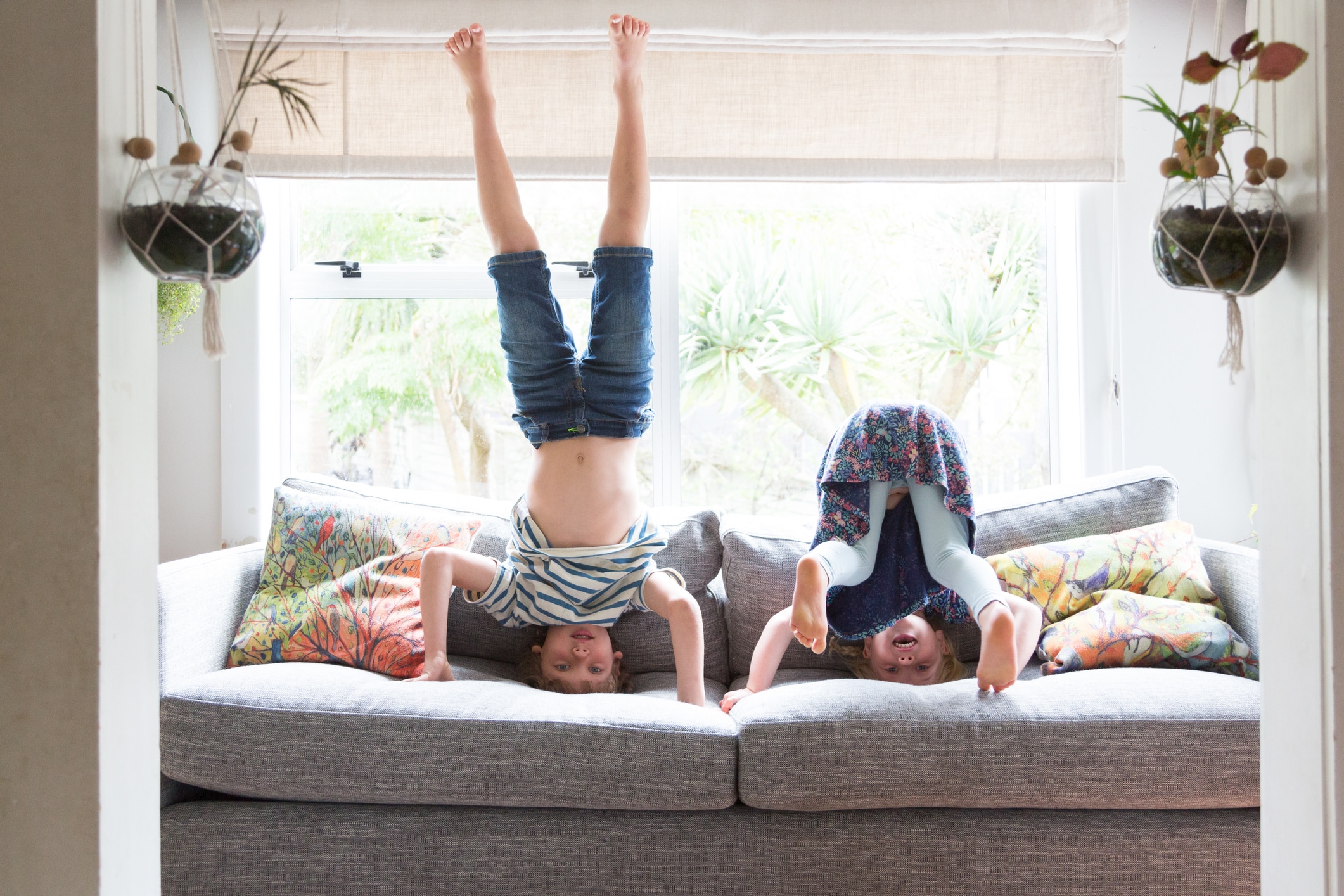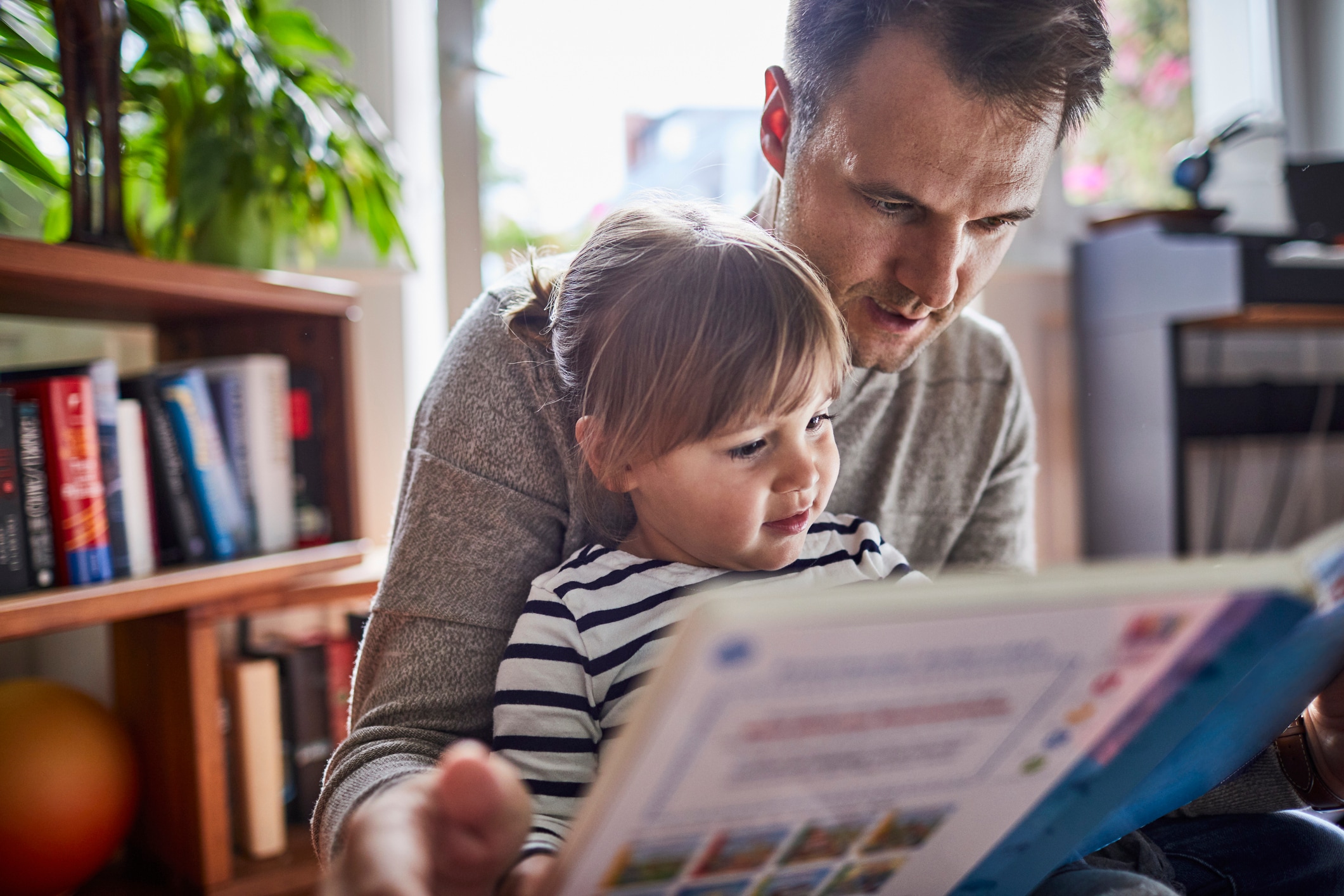If you’re a parent of a tween or teen, you likely won’t be surprised to hear that the 2024-2025 school year marks the beginning of several new cell phone bans across the country. In what many are calling a turning point for education in the United States, the Los Angeles Unified School District (LAUSD), the nation’s second largest school district, recently voted to ban students from carrying cell phones during the school day.
“Kids no longer have the opportunity to just be kids,” says Nick Melvoin, the LAUSD school board member who spearheaded the ban. “I’m hoping this resolution will help students not only focus in class, but also give them a chance to engage more with each other — and just be kids.”
A number of parents and educators support banning cell phones and social media use during school hours. The question many are continuing to ask: Can schools implement and enforce these bans effectively?
Ahead, we’ll delve into LAUSD’s new policy and detail how schools in other states are tackling this issue while gaining insights from parents, teachers and experts on the frontlines.
“Kids no longer have the opportunity to just be kids. I’m hoping this resolution will help students not only focus in class, but also give them a chance to engage more with each other — and just be kids.”
— Nick Melvoin, LAUSD school board member
New cell phone rules for Los Angeles schools
Back in June 2024, the LAUSD Board of Education voted to ban student use of cell phones and social media during school hours in an effort to improve learning, reduce distractions and decrease cyberbullying. However, each school is required to develop their own plans to implement the ban before it takes effect in January 2025. Implementation might include options such as storage lockers, locking pouches and technology to block social media.
A memorandum from the June 2024 meeting acknowledges implementation and enforcement problems with the previous cell phone policy, drafted in 2011. Its flexibility allowed district schools (and classrooms) to have differing rules around cell phones. Teachers frequently cited students using their headphones and earbuds parred with their cell phones throughout the school day — impeding classroom engagement.
The memorandum also cites another major potential drawback of phone use: “Student cell phone use could potentially decrease school safety during certain emergencies, spreading misinformation and interfering with official communications and directions to students.”
The pros and cons of cell phone bans in schools
Ron Self, the director of safety, security and risk management for Little Rock School District, central Arkansas’ largest school district, says cell phones have been a significant problem schools have been grappling with for over a decade. “Finding a solution won’t be as simple as having a policy or law to ban them,” he notes. “The issue is truly a catch-22.”
Self, who is also a founding committee member of the National Council of School Safety Directors, also wonders about students who ride the city bus or walk to school. “Will administrators be expected to collect phones every day? What happens if a phone gets lost? What if there’s a safety issue? Right now, I’m sure parents and administrators feel like there are many questions left to be answered.”
He says it’s much easier to get a policy like LAUSD’s passed than it is to enforce and communicate it, but acknowledges there are great rewards when things are done properly.
Case in point: California’s San Mateo-Foster City School District instituted signal-blocking Yoder pouches that allow students to keep their cell phones with them during the school day without the ability to access them. In an interview with NBC News, superintendent Diego Ochoa called the pouches an “unquestionable success” with students paying more attention in class and spending more time talking with each other outside of class.
Melvoin’s office says the district plans to use the time between now and January to build buy-in and engagement with parents. Some parents, for example, are notably guilty of texting their children throughout the day — a behavior the district hopes to minimize now that they know their child doesn’t have their phone on them. In other words, texting your child for the Netflix password isn’t an emergency and can wait.
“Unless you have been a teacher in the classroom with middle schoolers or high school students, you have no idea what it means to have to fight for students’ attention.”
— John LaSpina, former veteran teacher at Broward County Public Schools
California takes Florida’s lead with statewide legislation
On September 23, 2024, California Governor Gavin Newsom signed the Phones-Free Schools Act. Likely modeled after Florida, which became the first state to enact such a ban in 2023, the new California law requires all public schools to come up with a policy by July 1, 2026, that restricts or prohibits smartphones during the school day.
Teachers in Florida found that bans like these are necessary for many reasons. “Unless you have been a teacher in the classroom with middle schoolers or high school students, you have no idea what it means to have to fight for students’ attention,” explains John LaSpina, who taught for 34 years in Broward County Public Schools, Florida’s second-largest school district. “Cell phones were a constant battle; my students would text during class, use them to cheat, take pictures and videos, have alarms and ringers going off and on and on.”
Even before Florida’s statewide ban, LaSpina’s school required students to keep their cell phones off and in their backpacks during class and passing times, but they were able to use them in the cafeteria.
“With policies like this, the teacher is left to constantly enforce the rules during class — some doing it more than others,” says LaSpina. “You’d walk in the cafeteria and almost everyone was on their phones, not talking to each other or socializing while eating. They’d be playing games and watching videos and texting throughout the entire lunchtime.”
Some Florida schools decided to put stricter restrictions on students and ban cell phones during the entire school day, The New York Times reports — consistent with LAUSD’s newly approved policy. Without constant cell phone use, the hope is students will also engage in more face-to-face conversations, foster better social skills, and have better focus in the classroom.
What’s happening with cell phone bans in other states
Nationally, 76.9% of schools prohibit cell phone use during school hours, according to the National Center for Education Statistics. Yet, the scope of and rationale for these bans varies widely and many students (and parents) disregard them. Here are some examples from other schools and states.
Across the country, 76.9% of schools prohibit cell phone use during school hours.
— The National Center for Education Statistics
Vermont battles cell phones to curb youth suicide
Suicide is the second leading cause of death in Vermont youth, and a recent study tracking 11-17-year-olds’ phones showed that social media, messaging, YouTube and video games were the most used apps on phones during school hours. Driven by these statistics, the Vermont Senate modified Bill 284 that would require the state to develop a “model policy” regarding phone use in schools. Unfortunately, the proposed legislation recently died in the House. Representative Angela Arsenault, a Democrat, plans to reintroduce a similar bill in the next session.
“I’m very concerned that the middle school girls of today are even meaner than they were when I was growing up,” says Marina Mayer, a mother of two from Wauconda, Illinois. While she thinks teachers at her daughter’s school have done a good job enforcing the “no phones during class” policy, she says a group of girls at school are known for taking pictures of other kids during lunch and sharing them on Snapchat with rude comments. Other girls, she says, use social media to brag about what they’re doing and who they’re with — clearly outlining who they’re not with.
Similar stories and concerns about cyberbullying, and its effect on children’s mental health, stretch from coast to coast. In 2023, several states, including Vermont, sued Meta, the parent company of Facebook and Instagram, alleging the company knowingly created addictive products with detrimental effects on adolescents.
Charlotte Varney, a district representative for the Vermont State School Nurses’ Association, is in favor of banning cell phone and social media use in schools. At St. Johnsbury School, where she works as a lead nurse, students are required to turn in their phones at the start of the school day and get them back at the end of the day. “If schools don’t start setting limits,” she says, “where else can we start to address this health issue?”
Virginia encourages school boards to make cell phone policies
While several Virginia school districts already restrict cell phone use during school hours, many do not. To address this, Governor Glenn Youngkin issued an executive order in July 2024, directing state officials to create “guidelines on the establishment of cell phone-free education policies and procedures.” A month later, the Virginia Department of Education made their seven-page draft guidance public and open for comment.
The Loudoun County School Board took a proactive approach — requesting parent feedback before approving a revised cell phone policy that went into effect at the beginning of the 2024-2025 school year. (Their previous policy merely stated “students in all grades can use devices in school with a teacher’s permission.”) The revised policy joins many neighboring districts with the following clarifications:
- Elementary school students cannot use personal devices during the school day, except in classrooms with a teacher’s permission.
- Middle school students must keep devices “off and away” unless approved by administrators or their teacher.
- High school students can keep their personal devices on, but must keep them silenced during instructional time unless permitted to use them by a teacher. They may use them between classes and at lunch.
“This rule is perfect,” says Anne Coleman, a parent with a son in the district’s middle school. She adds that if a student needs a phone for medical reasons, they are allowed to keep it with them all day. For example, some students with learning differences and autism may use smartphones equipped with assistive technologies like screen readers and voice-to-text features. Other students with diabetes may use a glucose-monitoring smartphone app.
Coleman’s older son just started high school. She says the principal told parents “phones are to be off and put away during instructional time.”
Ohio’s proposal adds on digital media literacy curriculum
A common argument by those opposed to cell phone bans is that it might hinder students’ ability to develop essential digital media literacy skills necessary for the modern world. So, Ohio Republicans decided to blend the two into their recently proposed legislation.
Introduced in April 2024, House Bill 485 seeks to ban student access to any “personal wireless communication device” and social media during class time. A month later, in May 2024, Ohio Governor Mike DeWine signed House Bill 250 which only requires districts to establish policies on cell phone use in schools with exceptions for health conditions and learning accommodations.
“Middle school students don’t have the mental development to be able to manage this complicated electronic convenience the same way adults can. They think they ‘need’ their cell phones or they go into withdrawal.”
— John LaSpina
If House Bill 485 does eventually pass, all Ohio schools would have a cell phone ban and be required to implement a digital media literacy curriculum in grades six through 12 that includes the following:
- The negative effects of social media on mental health, including addiction.
- The distribution of misinformation on social media.
- How social media manipulates behavior.
- The permanency of sharing materials online.
- How to maintain personal security and identify cyberbullying, predatory behavior and human trafficking on the internet.
- How to report suspicious behavior encountered on the internet.
This news, which could set a national standard, came on the heels of a December 2023 report from the National Academies of Sciences, Engineering and Medicine that called for requirements for digital media literacy education for student teachers.
“Middle school students don’t have the mental development to be able to manage this complicated electronic convenience the same way adults can,” says LaSpina, who taught six, seventh and eighth graders. “They think they ‘need’ their cell phones or they go into withdrawal.”
What parents are saying
Many parents, including Mayer, want their middle and high school-aged children to have their cell phones easily accessible in school in case there is an emergency — with good reason: In addition to the mass shooting at Apalachee High School in Winder, Georgia, many Chicago-area schools have faced a wave of violent threats since the 2024-2025 school year began, leading to lockdowns and remote learning.
Dr. Kathleen Harknett, a North Carolina-based pediatrician and mother of three, disagrees that cell phones increase safety.
“All schools should be equipped with a telephone system and have an emergency preparedness team with cell phones,” she explains in reference to the American Academy of Pediatrics (AAP) guidance. “I won’t get my children a smartphone until age 16, but since landlines are no longer an option in our area, my husband and I would consider letting them carry a Light Phone when they need a way to contact an adult.” (A Light Phone is an unlocked cell phone that has WiFi, cannot display images and does not have a camera, an internet browser or any access to social media or other apps — making them a great smartphone alternative for children.)
Other parents worry it might be too much change too fast. “If school administrators want to ban cell phones, they’re going to have to phase it in,” adds Aubrie Entwood, a mom from Ithaca, New York. “Kids who have had unfettered access are going to protest; this is a cultural change that will take time.”
Entwood admits both she and her son spend a lot of time on their phones. “It’s hard to move backward without some serious help or social change,” she says. Many districts in her home state made unsuccessful attempts to curb the use of phones in school throughout the 2000s. David Banks, the chancellor of New York City Public Schools, is leading the charge to reinstate the cell phone ban in the nation’s largest school district, however Mayor Eric Adams has said it will not be in place for the 2024-25 academic year
What’s happening with cell phone bans at the federal level
As technology continues to expand, cell phone and social media use will continue to be central concerns uniting parents, caregivers and legislators across the nation.
Two U.S. senators — Tom Cotton, an Arkansas Republican, and Tim Kaine, a Virginia Democrat — recently joined forces for a Focus on Learning Act, bipartisan legislation that would require a federally funded nationwide study on the effects of cell phone use in K-12 classrooms and its impact on students’ mental health and academic performance.
The bill, which was introduced in the Senate in November 2023 was referred to their Committee on Health, Education, Labor, and Pensions, also authorizes $5 million annually for the next five years for a pilot program that provides schools with secure containers for students to store phones during school hours. A companion Focus on Learning Act was introduced in the House on July 10, 2024.
“I think these bans are ultimately a good thing,” says Stephen Owens, who holds his doctorate in educational policy and currently directs policy and advocacy at Brown’s Promise, an initiative of the Southern Education Foundation. “I don’t expect [test] scores to go up significantly or discipline to ease much, but there’s a reasonable expectation that students will appreciate the change.”
The bottom line on cell phone bans at schools
While it’s tempting for everyone, including policymakers, to blame cell phones for disengagement in the classroom, the real problem might lie in an education system struggling to hold the attention of the digitally native Gen Z and Gen Alpha.
“Let’s not pretend that school — pre-cell phones — was a peaceful haven of academic enrichment,” cautions Owens. “I was there; kids find other things to get distracted by.”
Fortunately, many schools and states are making conscious efforts to strike a balance with policies that acknowledge the digital realities of today and added curriculum to enhance digital media literacy.





